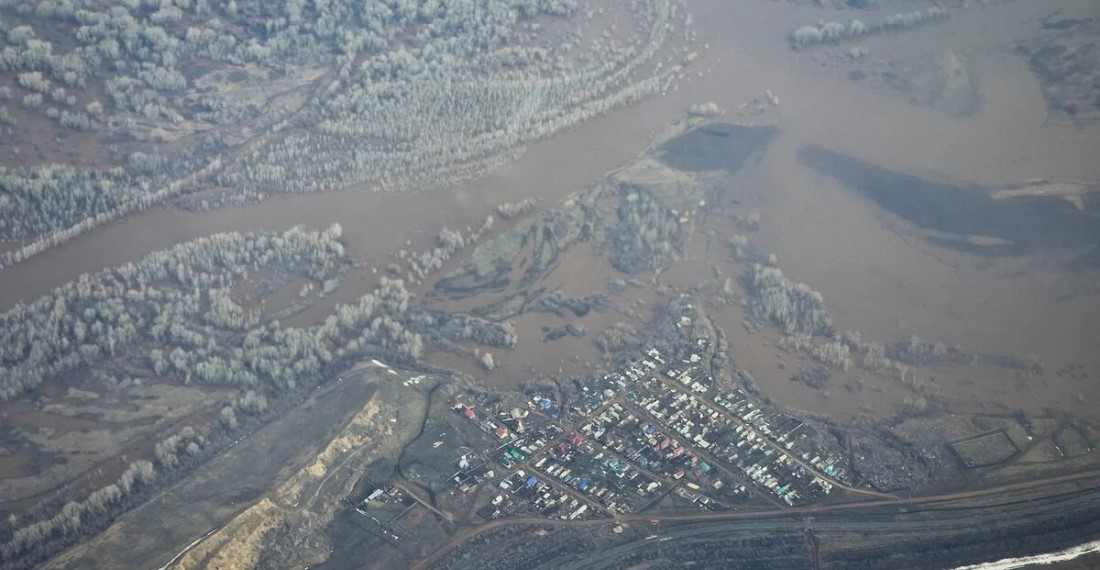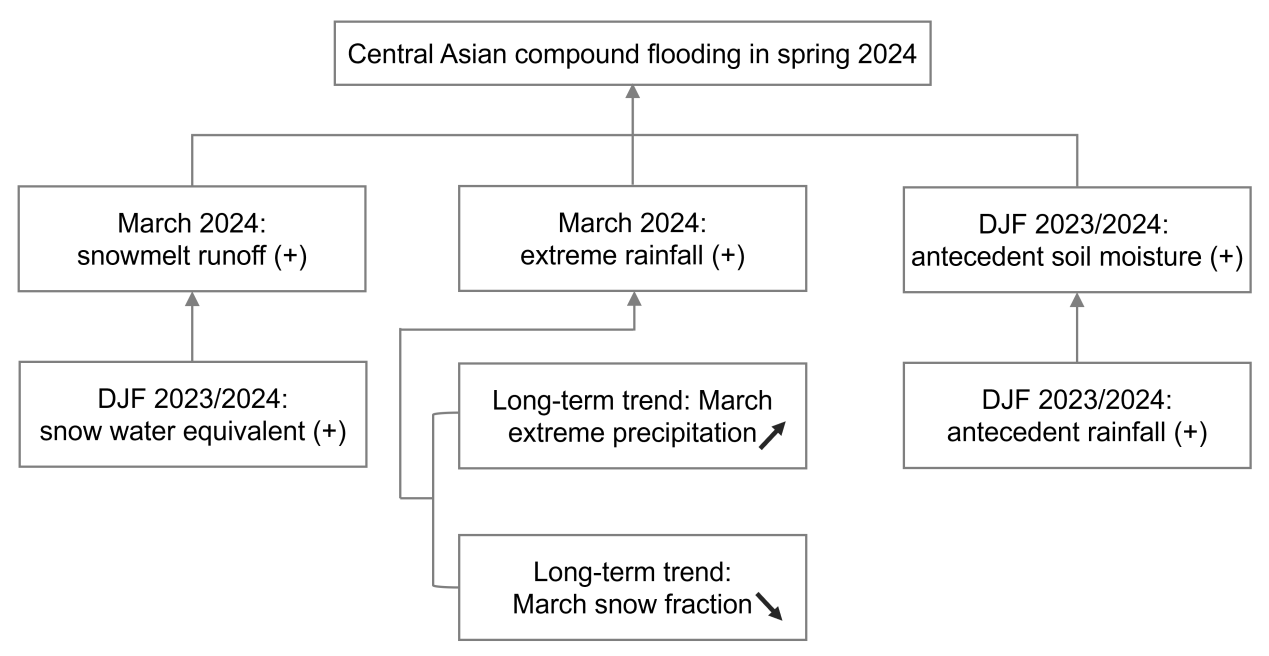When Rain, Snow, and Soil Align: The Triple Threat Behind 2024's Deadly Central Asian Floods
Date:2025-06-21
The record-breaking flood underscores a looming crisis for mid-high latitude regions as climate change amplifies compound disasters.
The past year of 2024 was characterized by repeated runs of extreme rainfall and floods worldwide. Among these, one of the most devastating events was the Central Asian flood in the spring of 2024. From the end of March to April 2024, extensive flooding impacted large areas of Kazakhstan and neighboring southwestern Russia, which was reported as the worst flooding in the area for at least 70 years. The floods resulted in widespread devastation, leaving dams breached and overflowing reservoirs. More than 118 000 people were evacuated and over 12 000 residential buildings were flooded. The damage was estimated to exceed $623 million for Kazakhstan, surpassing the total cumulative damage from water-related disasters over the past 30 years.

The flood in spring 2024 over Kazakhstan and southwestern Russia (Source: https://www.commonspace.eu/news/kazakhstan-struggles-deal-massive-flooding)
In a recent study published in Advances in Atmospheric Sciences, an international team of scientists led by Dr Zhang Wenxia at the Institute of Atmospheric Physics, Chinese Academy of Sciences (IAP/CAS), unravel the driving mechanisms underlying this record-breaking flood event.
“The record-breaking floods were contributed by both long-term climate warming and interannual variability, with multiple climatic drivers at play across the synoptic to seasonal timescales”, said Li Lan, PhD candidate at the IAP/CAS, contributing author of the study. First, the heavy snowmelt in March 2024 was associated with above-normal preceding winter snow accumulation. Second, extreme rainfall was at a record-high during March 2024, in line with its increasing trend under climate warming. Third, the snowmelt and extreme rainfall in March were compounded by record-high soil moisture conditions in the preceding winter, which was a result of interannual variability and related to excessive winter rainfall over Central Asia. Thus, this record-breaking flood event was a typical compound extreme event, exacerbated by extreme rainfall, heavy spring snowmelt and record-high soil moisture pre-conditions.

Summary of the climatic drivers of the Central Asian compound flooding in spring 2024. The “+” symbol indicates above-normal conditions. The arrows indicate increasing or decreasing trends. (Image by Zhang Wenxia)
“As climate warming continues, the interplay between the increasing trend of extreme rainfall, interannual variations in soil moisture pre-conditions, as well as shifting timing and magnitudes of spring snowmelt, will further escalate and complicate spring flooding risks. This is a growing and widespread challenge for the mid- to high-latitude regions,” added Dr. Zhang Wenxia, “Such complexity poses significant challenges to predictions and projections of compound floods. To improve this, we need to better understand the long-term changes of individual drivers as well as their interactions.”
